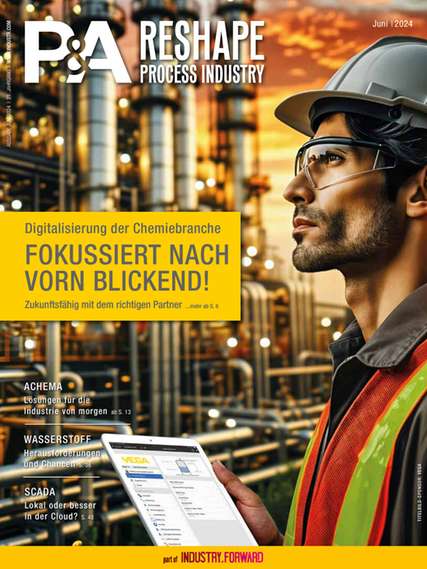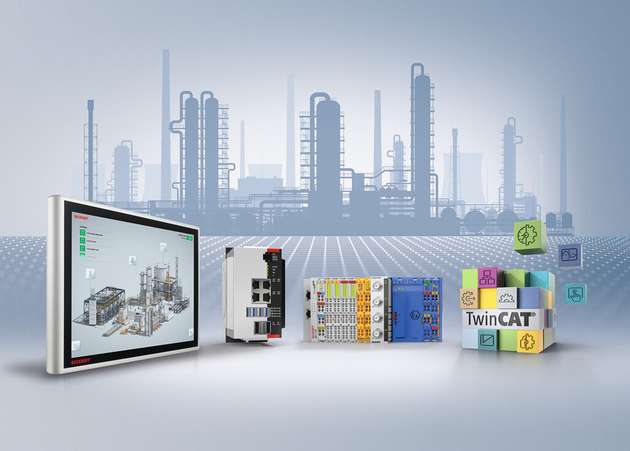PC-based control from Beckhoff provides customers with a holistic control system for automating their plants. The industrial PC is the core component of PC-based control technology and forms the basis for managing and monitoring processes in process plants. Thanks to the precisely scalable portfolio, it is possible to use an industrial PC individually tailored to the task at hand to control the plant: industrial PCs are available in all kinds of different form factors. Support for many standards and protocols ensures cross-system data communication at both the higher-order control level and the field level.
Two different concepts have become established for the architecture of plants. In the centralized approach, all information comes together in a control cabinet, while the sensors and actuators are connected via remote I/Os. A decentralized architecture consists of several control systems that are assigned to a specific plant section and take over its process control. Modern automation systems support both concepts – not only on the control side but also through I/O systems that can be operated both as remote I/O and directly on embedded controllers. Beckhoff offers appropriate I/O modules for each scenario for installation in the control cabinet (IP20) or directly in the field (IP67).
In addition to flexible topology, explosion protection requirements are a frequent prerequisite for the use of electrical equipment in the field in the process industry. The greatest challenge for automation here is data acquisition from zone 0/20 via intrinsically safe signals. The I/O modules of the ELX series offer a compact and integrated solution in which intermediate barriers are eliminated. All EtherCAT features can be used, from fast data communication to end-to-end diagnostic options. The portfolio is supplemented by various series of control systems, I/O modules, and control panels for installation in zone 2/22. This enables decentralized control and visualization in close proximity to the process.
Customized software solution
The advantages of PC-based control technology come to the fore not only when considering the hardware, but especially with regard to the flexibility of the software. The TwinCAT automation software has a range of functions, including for visualization or data analysis, but at the same time offers a large number of interfaces to make the data available to other systems. Above all, this means that the user is free to choose their preferred software solution, enabling them to use the best possible tools for their application in a future-proof manner.
The industrial PCs execute the program code for process control as a soft PLC in real time, and their high computing power enables them to process large amounts of data in a short time. This database can be evaluated on the IPC either directly in real time in the PLC code or by integrating external software tools to which the data records are transferred. Data exchange in Industrie 4.0 scenarios or IoT solutions is also possible directly in the control system without additional devices via integration into the IT infrastructure. This results, for example, in applications for condition monitoring of entire plant parks, which monitor all field devices with cloud support and recommend measures for predictive maintenance in order to minimize downtimes.
Redundancy for increased availability
To further increase the availability of a plant, redundant architectures can be used to safeguard against failures of individual control components. In this way, communication interruptions can be intercepted by implementing cable redundancy. By creating a ring structure, this ensures that all I/O modules of the system can still be reached in the event of a cable break, for example. With TwinCAT Controller Redundancy, on the other hand, it is possible to run the industrial PC and thus the control program redundantly.
For this purpose, standard components are enabled for redundant operation by the TwinCAT software – which means that special hardware is not required. Control redundancy ensures that in the event of a failure of one control system, the second one takes over operation. To this end, the two control systems are connected via network lines which enable synchronization and, in the event of a fault, switchover without loss of information.


















